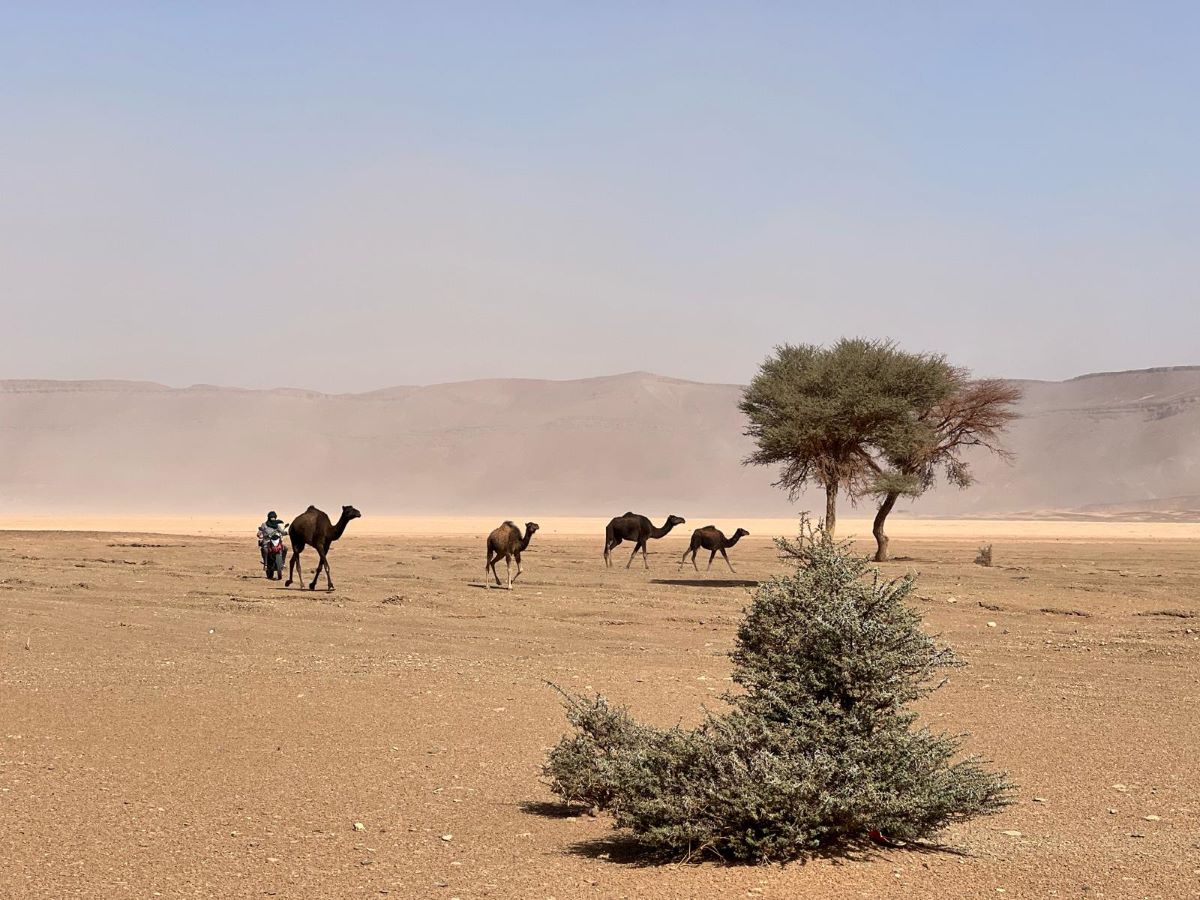Azwu bzef: A lot of wind. Too much wind. Enough wind; more than enough … more wind than you would ever want to encounter in the middle of a desert.
‘You are so lucky.’ Hamid, our Moroccan driver, always tells me when a sketching trip has ended without climatic hitch. According to him, March is a prime time for a sandstorm. Rain in Marrakech means wind in the desert, turning the sky a thick, milky grey, dense with particles which can find their way into, and over, everything. In a simple desert ‘auberge’ with casually-fitting windows you can awaken to dunes at the foot of the bed high enough to sport a camel-train.
I smile at this luck he insists we have, certain it’s normal. March is a perfect month: the High Atlas sparkling with the last winter snows; rivers rushing fresh and clean; almond blossom bursting forth. The days should be pleasantly warm and the evenings slightly cool. But wind? Not for us. We’re always lucky. Aren’t we?
We felt it first in the Dades valley, where it funnelled through the gorges and we sent us scurrying for shelter and strong black coffee with only half of the iconic view. I pleaded with Hamid: assure me that it’ll be fine by the time we reach M’Herch? But he just shook his head and smiled. The last few years, he explained, were unusual. They have been exceptionally dry, evidenced by low – or empty – rivers and less-than-lush palmeries. No rain, no wind; great for painting. Not so great for the environment. So while we had lucked out this time, it was a kind of comfort to know things were ‘back to normal’, at least temporarily.
On this itinerary we usually stop about an hour short of our destination under a lone acacia tree, in the middle of the stony plains, to paint sandy hills, and the sheer remoteness of the spot is a highlight I’m loathe to skip. But when you end up with rather more texture on your paper than you’d planned for and your brush gets clogged up with so much sand and grit that it won’t pick up colour anymore, you know it’s time to give up and drink mint tea, or in this case, the wine we’d managed to purchase in El Kelaat M’Gouna. And to untangle the hair in the shower, watching the water run – well, sand-coloured.
Feeling strangely responsible, I appologised to the group. I was so looking forward to showing them my favourite place in glorious sunshine and plunging into the pool.
‘It’s quite exciting, though,’ said John. ‘It’s not every day you get to witness a real Saharan sandstorm.’
In truth, it was nowhere as near as bad as some I’ve experienced later in the summer, when you simply can’t be outside. Those ones tend to whistle through in a day; two if you’re unlucky. This milder version hung around for several days, offering us clear, bright mornings before building up again in the afternoon. Frustrating though this was, everyone rose to the challenge of getting up a little earlier, painting for as long as possible, then taking a nap in the afternoon or finding something to sketch indoors. It was intriguing to discover we needed a whole new palette in the strange, yellow-grey light while the grittiness added a certain something when depicting adobe buildings.
Weather can’t be controlled, so having an open mind and flexible attitude is important when travelling to new places. Hamid is right – I am lucky; I’m lucky with my groups, with the people who choose to come on these holidays, who are always cheerful, adaptable and able to turn negatives into positives.
The sun returned, of course. And when we arrived back in Marrakech it had rained, to the delight of the residents. And then dried up again, just for us.

